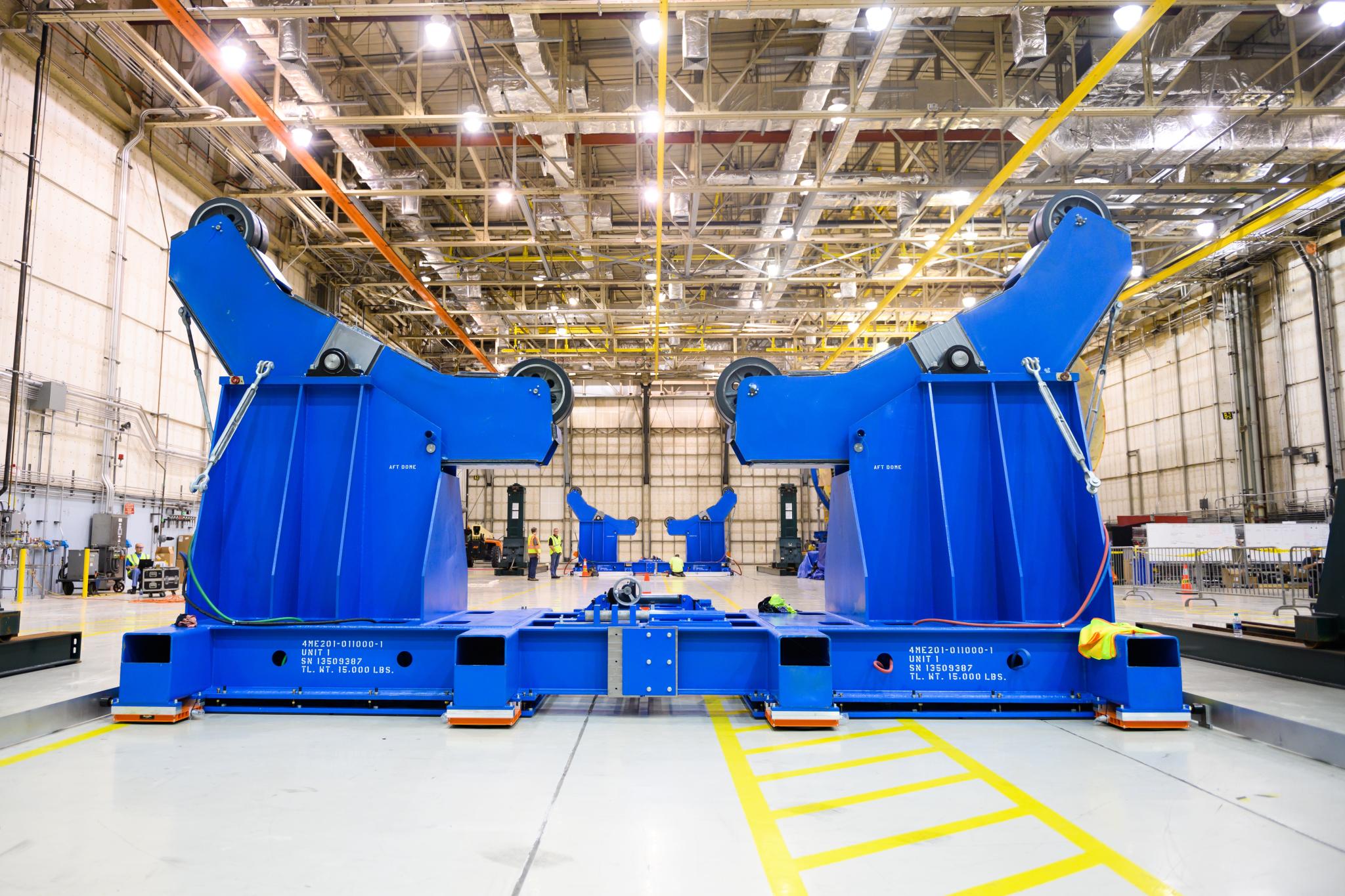NASA is working to send the first woman and next man to the Moon by 2024, and Michigan is helping make it happen.
Futuramic, a company with factories in Detroit and Warren, Michigan, is one of more than 78 Michigan companies and 3,200 businesses across 50 states supporting NASA’s return to the Moon by supplying parts for the agency’s new deep space rocket, the Space Launch System (SLS), Orion spacecraft and Exploration Ground Systems. Through NASA’s Artemis program, the agency will embark on a series of increasingly complex missions to establish a presence at the Moon for decades to come and learn the skills needed to send astronauts to Mars.

This month, Futuramic delivered a new tool to help NASA speed up production of the SLS rocket’s massive core stage. SLS will be the most powerful rocket in the world and will send astronauts in Orion farther into space than ever before. No other rocket is capable of carrying astronauts in Orion around the Moon. The core stage, currently being built in New Orleans at NASA’s Michoud Assembly Facility by lead contractor Boeing, will feed the RS-25 engines which will produce two million pounds of thrust to launch the SLS rocket on missions to the Moon and beyond.
“We are proud that Michigan is playing a role in building the core stage that will send the Space Launch System rocket and the Orion spacecraft on the first mission to the Moon,” said John Couch, vice-president at Futuramic in Detroit. “Futuramic made tooling that is being used to build some of the largest rocket structures ever manufactured including the massive tanks that hold more than 700,000 gallons of propellant.”
Futuramic’s tool holds the 130-foot-long liquid hydrogen tank – the largest part of the core stage – in a stable position, so it can be moved and connected to the upper part of the rocket’s core stage, which was completed earlier this year.
“Boeing worked with Futuramic to design this tool quickly, so we could speed up production by horizontally joining the liquid hydrogen tank to the forward part of the rocket,” explained Craig Williams, the Boeing SLS core stage independent product team director. “Switching from stacking the bottom parts of the stage vertically allowed us to continue outfitting the complex engine section of the rocket while joining the liquid hydrogen tank to the top part of the rocket stage.”
The engine section will be the last piece connected to form the entire stage. Tools like this, and another provided by Futuramic earlier this spring to allow more people to work on the rocket’s production at the same time, are helping NASA accelerate final integration and assembly of the stage.
“When the core stage is completely assembled later this year, it will be the largest stage made for a rocket designed to launch humans since the mighty Saturn V that launched the Apollo missions to the Moon 50 years ago,” said Ken Dunn, NASA core stage propulsion components manager. “Futuramic and 15 other Michigan companies are helping us build this Moon rocket.”
Working with Boeing, Futuramic has played a role in manufacturing almost every major part of the core stage. The company helped to design the tools that make the domes capping the rocket’s liquid oxygen and liquid hydrogen tanks and built tools and flight hardware for the intertank that connects to the powerful solid rocket boosters that each produce 3.5 million pounds of thrust at liftoff. In addition, they built simulators for test versions of the rocket’s hardware that are subjected to extreme forces to show the tanks can survive the harsh environment of spaceflight.
Michigan is the birthplace of 12 NASA astronauts, and businesses in Michigan currently hold more than 80 contracts with NASA, worth a combined total of more than 37 million dollars. With companies like Futuramic, Michigan is helping build NASA’s backbone for deep space exploration, including SLS along with Orion and the Gateway in orbit around the Moon. Through the Artemis program, the next American Moon walkers will inspire a new generation and bring about new opportunities for companies across the United States in this new era of exploration.
Learn more about NASA’s Space Launch System at:
https://www.nasa.gov/moontomars/
Tracy McMahan
NASA’s Marshall Space Flight Center, Huntsville, Alabama
256-544-0034
tracy.mcmahan@nasa.gov























